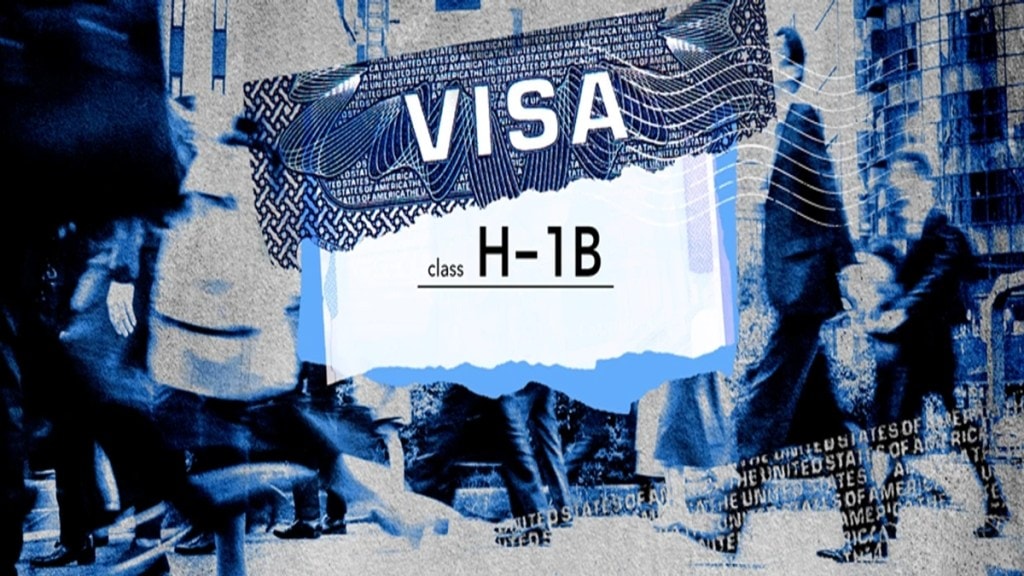President Donald Trump’s new executive order has set off alarm bells across the tech industry and Indian H-1B community by imposing a $100,000 fee on H-1B visa applications. But much of the panic comes from confusion. After reading the full order, here’s what the it actually says and what it doesn’t.
Myth 1: Every H-1B worker must now pay $100,000
Reality: The fee applies only to petitions for workers currently outside the United States. If an H-1B holder is already living and working in the U.S. on an H-1B, this new fee does not directly apply to you. It can be applied for renewals and fresh applicants.
Order says, “Secretary of Homeland Security w restrict decisions on petitions not accompanied by a $100,000 payment for H-1B specialty occupation workers under section 101(a)(15)(H)(i)(b) of the INA, who are currently outside the United States.”
White House and several other US agencies including USCIS also confirmed that this proclamation only applies prospectively to petitions that have not yet been filed. “The proclamation does not apply to aliens who: are the beneficiaries of petitions that were filed prior to the effective date of the proclamation, are the beneficiaries of currently approved petitions, or are in possession of validly issued H-1B non-immigrant visas,” it stated.
Also Read: $100,000 H-1B visa order – Full Text
Myth 2: It’s a sweeping order for all H-1B applicants
Reality: Department of Homeland Security can waive the $100,000 requirement for key national interest industries (like defence contractors, critical STEM research, or essential healthcare workers).
The order particularly mentions, “The restriction imposed pursuant to subsections (a) and (b) of this section shall not apply to any individual alien, all aliens working for a company, or all aliens working in an industry, if the Secretary of Homeland Security determines, in the Secretary’s discretion, that the hiring of such aliens to be employed as H-1B specialty occupation workers is in the national interest and does not pose a threat to the security or welfare of the United States.”
Myth 3: Existing H-1B holders will lose their status
Reality: The order does not cancel or revoke current H-1B visas. It applies only to new petitions filed after September 21, 2025. Those already in the U.S. can continue under existing rules unless their employer files a fresh petition from abroad. Whereas it will be reviewed after 12 months.
Also Read: Trump rolls out gold and platinum visa
Myth 4: $100,000 is an annual fee for H-1B holders
At the Oval Office Donald Trump and Howard Lutnick claimed that the new $100k fee for H-1B visas is an annual fee that must be paid each year.
Reality: The order does not mention an annual fee of $100,000, whereas it states the order is limited to 12 months and will be revisited.
Myth 5: $100,00 fees is a permanent change
Reality: The fee requirement is set for 12 months unless extended. The administration will review the impact after the next H-1B lottery before deciding on renewal.
“No later than 30 days following the completion of the H-1B lottery that immediately follows this proclamation, the Secretary of State, the Attorney General, the Secretary of Labor, and the Secretary of Homeland Security shall jointly submit to the President, through the Assistant to the President and Homeland Security Advisor, a recommendation on whether an extension or renewal of the restriction on entry pursuant to section 1 of this proclamation is in the interests of the United States,” order states.
Myth 6: Companies can bypass the fee by shifting workers on B-visas
Reality: The order specifically warns against misuse of B-visas. The State Department will issue strict guidance to prevent backdoor hiring. “Order is a pre-emptive block against companies sneaking H-1B hires into the U.S. on business/tourist visas to avoid paying the new fee or waiting for the proper start date.Secretary of State will issue new guidance to consulates and embassies making sure B visas aren’t being misused by workers who already have approved H-1B petitions (with start dates before October 1, 2026).”
Myth 7: H-1B program still favours entry-level foreign workers
Reality: The order raises prevailing wage levels and instructs DHS to prioritize high-paid, highly skilled applicants. Outsourcing firms that relied on cheaper labor will be hit hardest.
“The Secretary of Labor shall initiate a rulemaking to revise the prevailing wage levels to levels consistent with the policy goals of this proclamation consistent with section 212(n) of the INA, 8 U.S.C. 1182(n),” the order states.
Myth 8: H-1B applicants to pay $100,000 visa fees
Reality: Order puts the onus on employers to pay the fees on behalf of workers they plan to hire from outside the United States. Order says, “Employers shall, prior to filing an H-1B petition on behalf of an alien outside the United States, obtain and retain documentation showing that the payment described in section 1 of this proclamation has been made.”
What It Means Going Forward
For workers already in the U.S., nothing changes immediately — but renewals and transfers may become more expensive if employers refile petitions abroad. For companies, the H-1B is no longer a cost-saving option. The message is clear: the U.S. wants fewer, but higher-paid and highly skilled, foreign workers.

